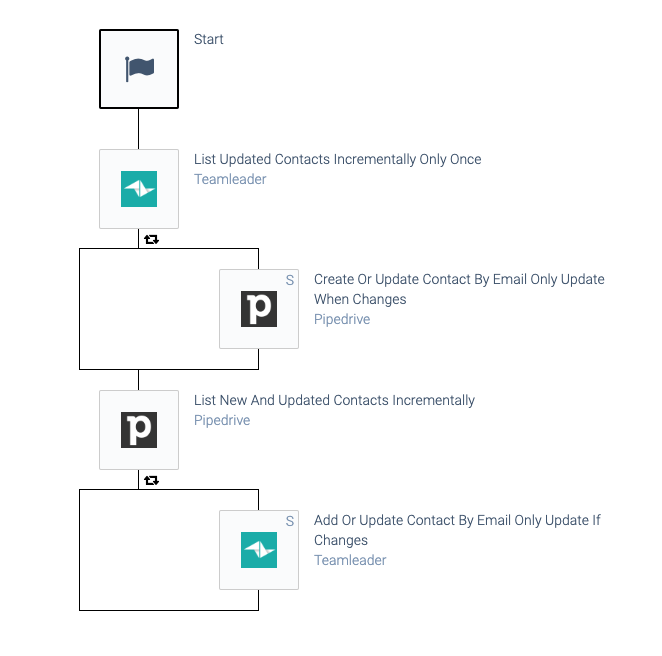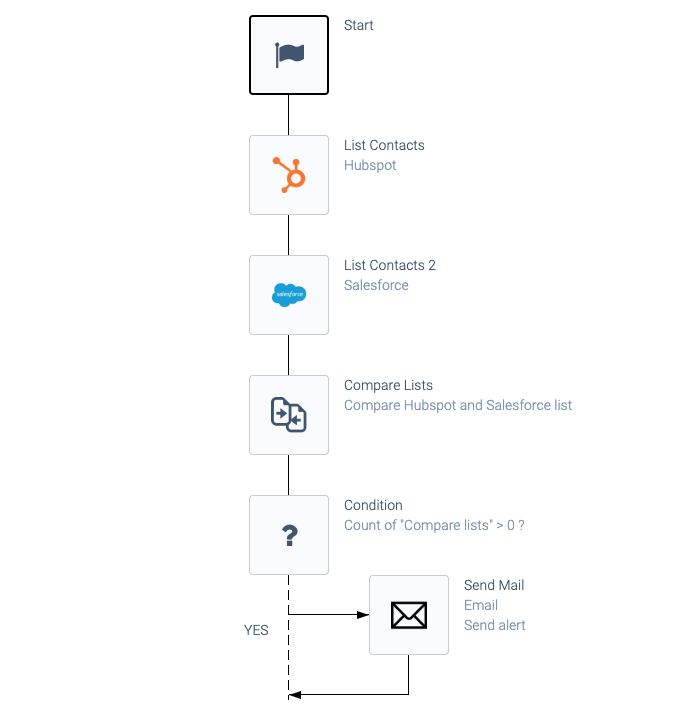Two-way data synchronization
Two-way sync is between two platforms (A and B) where data can be changed in either platform.
All remarks for one-way sync also apply to two-way syncs! On top of that, two-way sync requires the below points of attention.
Example two-way sync pattern
Here's a simple example of 2-way sync of Contacts, without deletes:
A two-way sync pattern.

Endless loops
Avoid endless loops where an update from A to B causes an update from B to A, which causes a new update from A to B etc. This is accomplished by using the only update when needed
rule (see above) so that timestamps of objects are not increased when no changes are needed.
Conflict handling
Keep the synchronization intervals as low as possible to reduce the change of conflicts (change made to the same object in A and in B at the same time).
Comparison automations
A good practice is to create a Compare
automation that compares all data from A and B, to make sure that the synchronization is working as expected. A compare automation could run e.g. once a day or even once a week because it typically needs to process a high amount of data.
A Compare automation could reveal issues that otherwise go unnoticed, e.g. issues related to a human mistake in the Blend, issues related to timestamps, issues related to the API or Webhooks of one of the platforms, etc.
You can send out an email alert in the Compare automation when issues are detected.
Example:
A Comparison automation.

Did this page help you?
If you find any issues with this page or its content – a typo, a missing step, or a technical error – let us know how we can improve!
